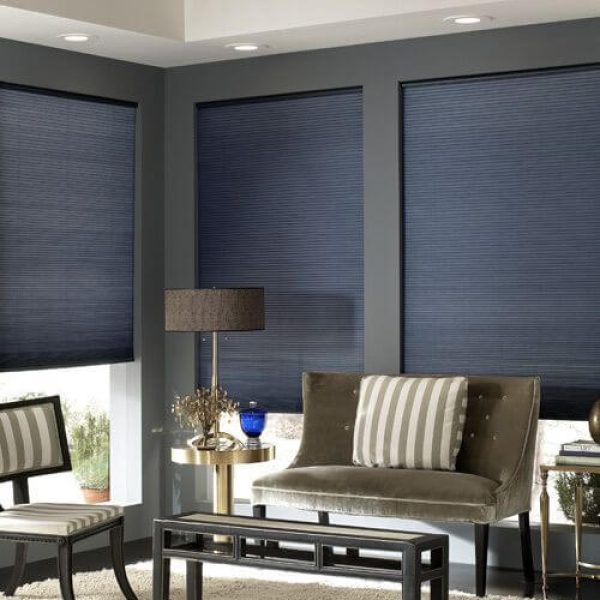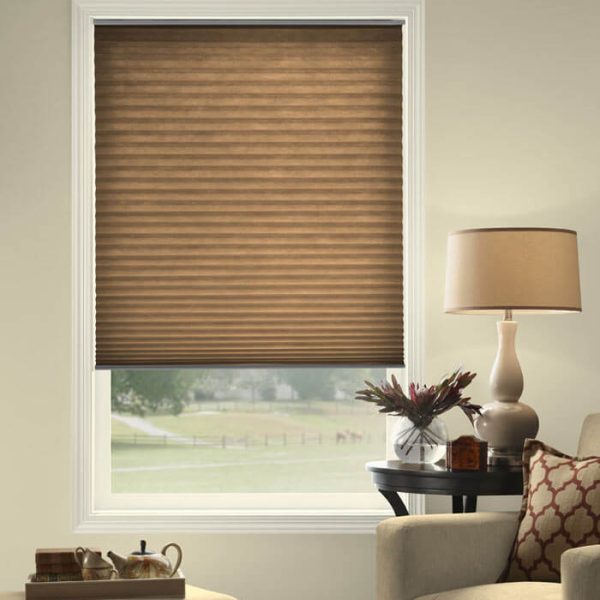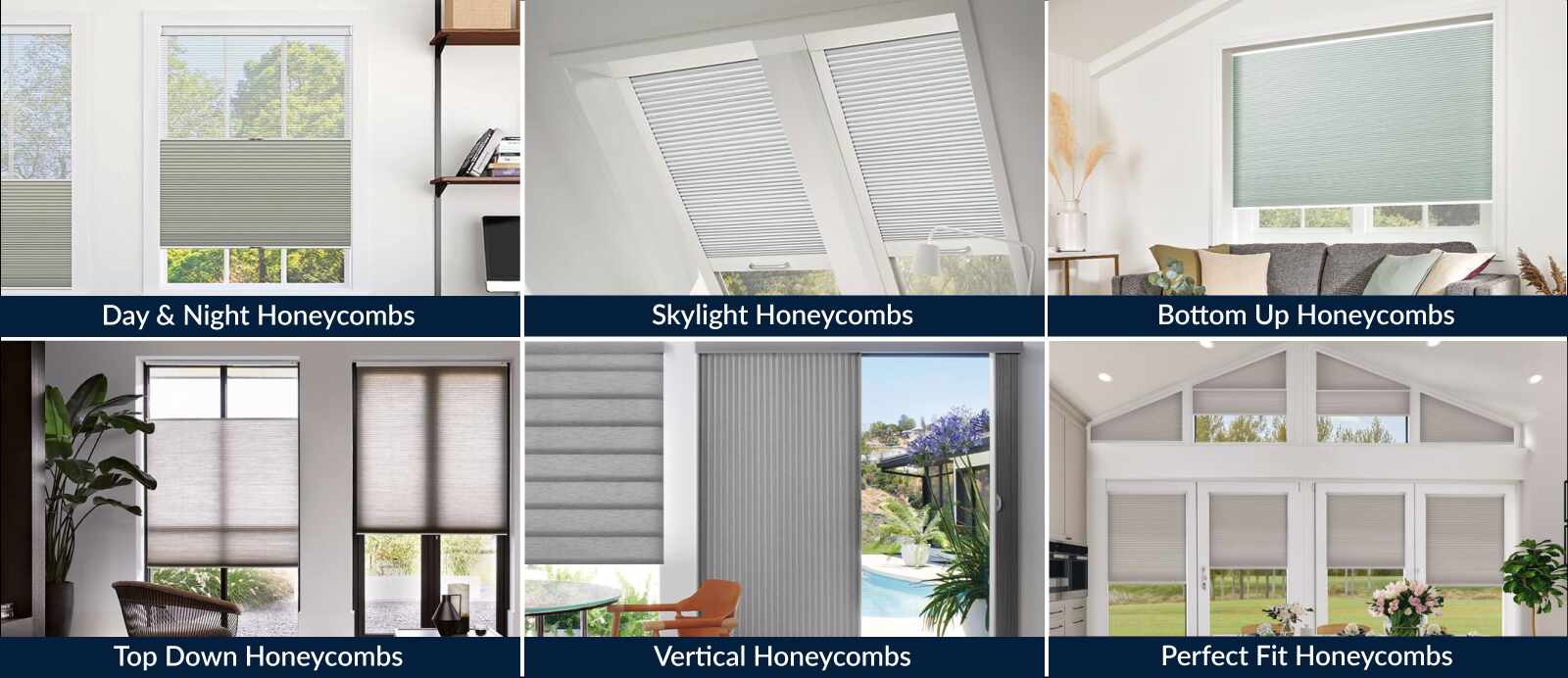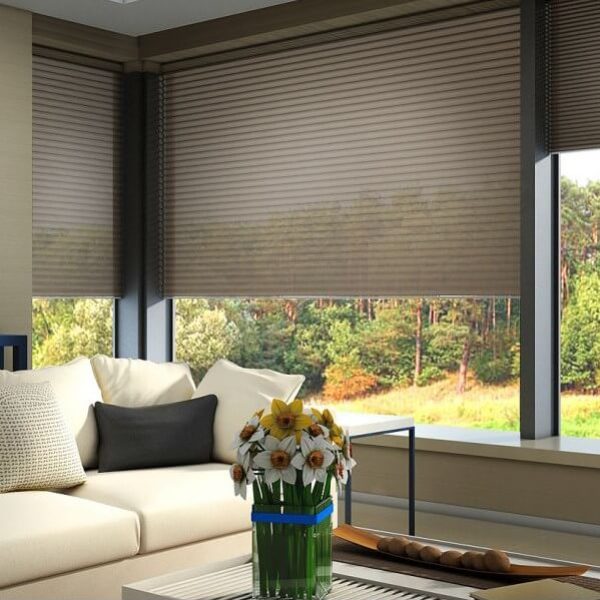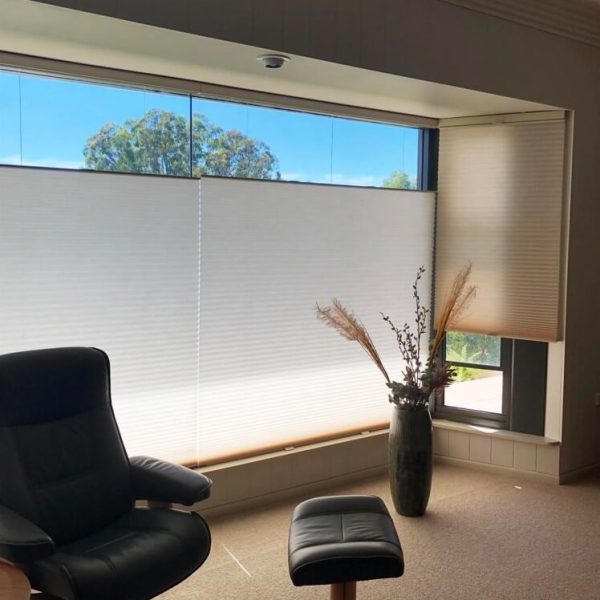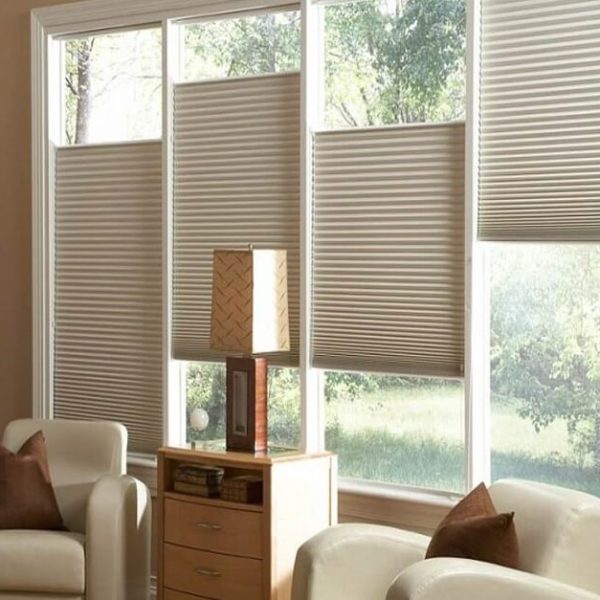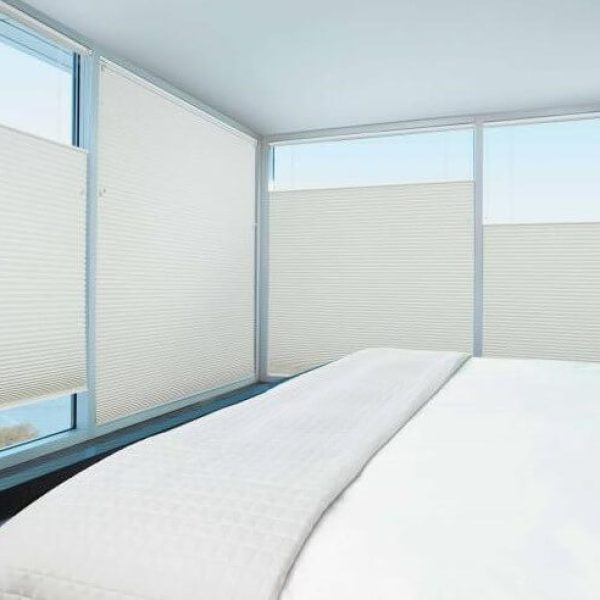Energy efficiency is a recurring problem in homes; but honeycomb roller blinds can help tackle this. How? We’re glad you asked.
Honeycomb blinds are the most thermally-efficient window furnishings around. They’re also a cost-effective option. You’ll find them available in both single, and double cell fabrics – and that they look very similar to another structure. If you guessed actual bee honeycombs, you’re right on the money. That’s indeed where the ideal was stolen from. Sorry bee friends, we thought it was ingenious!
The reason for the special structure of the cells of these blinds is simple.
They help trap hot air within them, preventing its easy loss; it’s what makes them thermally efficient.
This means they can provide effective insulation, while at the same time serving elegant, contemporary looks. Best of all, the design is versatile, allowing you to shape these blinds for arches, tricky angles and even skylights.
This practicality has made honeycomb roller blinds a popular choice for countless spaces. You can also indulge in a wide range of fabric opacities and design options that will help with light control and privacy. They’re also anti-static and dust repellent; which not only protects from allergies and asthmatic conditions, but also require less maintenance.
PRO
Enhance Insulation with Honeycomb Roller Blinds
The average home typically loses around ⅓ of heating/ cooling energy through glass doors and windows.
Window furnishings in general help to retain this energy within, however honeycomb blinds are able to do this on a higher level:
- The specially designed cells form a substantial barrier, as air is trapped within them. This allows some windows to almost double their resistance value, a common measurement of insulation.
- With honeycomb blinds, the R-value can be raised from 3.5 to 7. Our honeycomb blinds have been rigorously tested and proven, with the ability to save you up to 32% on energy costs.
When translated to using honeycomb roller blinds for windows, this simply means, much better and improved insulation.
PRO
Versatility
Honeycomb blinds are incredibly versatile and offer a range of options to suit various needs and preferences.
- Day and night honeycomb blinds combine two fabrics in one shade, allowing for flexible light control and privacy throughout the day.
- Skylight honeycomb blinds are perfect for hard-to-reach windows, providing insulation and light control in overhead spaces.
- Bottom-up and top-down honeycomb blinds offer the ability to adjust the shade from either the top or bottom, giving you maximum control over light and privacy.
- Vertical honeycomb blinds are ideal for sliding doors and large windows, providing a sleek and modern look while offering the same energy-efficient benefits.
- Perfect fit honeycomb blinds are designed to seamlessly integrate with your windows, providing a clean and unobtrusive appearance without the need for drilling or screws.
Overall, honeycomb blinds are a practical and stylish choice for any home, offering excellent insulation, light control, and privacy.
PRO
Greater Privacy
Honeycomb blinds won’t compromise on privacy, unless of course you choose a sheer fabric. Even then, you won’t exactly be fully visible.
While honeycomb blinds can be operated by cord or automated, they also function as ‘top-down’ and ‘bottom-up’ blinds.
This allows you to move the entire blind either up towards the window or down to the bottom of the sill. Which in turn, allows you to make the most of your views.
Additionally, you’ll be able to let in light without sacrificing privacy. Any light that does come through them, is tempered.
PRO
Helps Block Out Noise
Insulation is not only reserved for temperature control. It’s also relevant to noise.
Now while honeycomb roller blinds won’t give you a soundproof atmosphere, they can certainly help muffle sound. Their cells, especially double-cells, act as a thicker barrier than your average roller blind.
PRO
Slim and Stackable
Honeycomb blinds don’t have their design for the sake of it.
Every inch has been carefully pondered over, with the aim of functionality.
While you can adapt them to suit various shapes, you’ll find that they all have the same slim, stackable structure.
The cells are long, and stretch across the length of the blinds where air is trapped. This means they’re not bulky. In fact, the long cells make the blinds look streamlined, and neat.
We use Perma-cell technology, which helps prevent the cells from stretching, ensuring they retain their looks and performance.
The simple and modern appeal of honeycomb blinds also makes them great companions for minimalist themes. Honeycomb roller blinds have a sleek design, available in a range of colours and fabrics.
CON
Cleaning Is More Difficult
The best way to clean these blinds is to use a soft, dry cloth. A microfibre cloth would be ideal.
Vacuuming will also do the trick, just remember to use horizontal strokes.
Never wet them – if you need to remove a stubborn stain, we recommend using a dry paper towel to scrape it off.
There’s also another issue that may occur from time to time; bugs crawling into the cells.
Now it’s not something that happens all that often, but occasionally, you might come across a creepy-crawlie in there.
The solution? Compressed air.
Get yourself a can and keep it handy, as this can blow out insects, dirt and debris that may accumulate in the cells. It’s far more precise than using a hairdryer.
Conclusion
Summing up, honeycomb blinds offer a blend of style, energy efficiency, and versatility that make them a popular choice for many homeowners.
Their unique design provides excellent insulation, helping to reduce energy costs, while the variety of types ensures a perfect fit for any window.
With a wide range of colour options available, they can complement any decor.
While they may come at a higher initial cost than say, roller blinds, the benefits they provide in terms of energy savings and aesthetic appeal make them a worthwhile investment.
Weighing these pros and cons will help you determine if honeycomb blinds are the right solution for your home’s needs.








